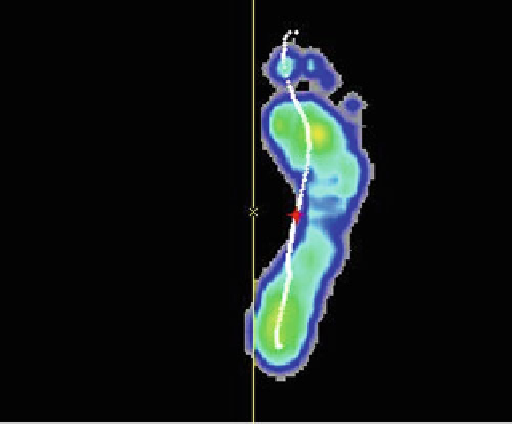Biomedical Engineering Reference
In-Depth Information
Fig. 3
Plantar pressure distribution in right foot contact
2.3.1
Foot Contact Phases and COP Trajectory
The foot performs several functions during ground contact, and may be divided
into several phases. In the beginning of contact, the foot acts as a shock-absorbing
structure, followed by a total support phase, when behaves as a stable object [
61
]. In
the final phase, foot acts as a catalyst, by moving the body structure in the direction
of progression. Winter defined five stages in foot ground contact [
62
](Fig.
4
):
• Initial contact, or foot contact with ground support, normally by Hell (Fig.
4
a).
• Contact of the fifth Metatarsal (Fig.
4
b).
• Total contact, or contact of all Metatarsals (Fig.
4
c).
• Heel elevation, or heel is no longer in contact with the ground support (Fig.
4
d).
• Final contact, or last anatomical structure in ground contact, normally the first
toe (Fig.
4
e).
The COP trajectory begins with the heel contact (assuming that the initial contact
begins in this area) and moves towards to the final contact in first toe [
47
]. However,
in the literature, there are no descriptions about this normal COP trajectory. In
the normality, there is a tendency to an external COP trajectory between phase 1
and phase 2. To determine the tendency of COP trajectory (internal or external),
is important to define the longitudinal axis of the foot. This axis is the imaginary
line passing through the heel and the space between the head of the 2nd and 3rd
metatarsal [
63
]. If the trajectory of the COP is located outside this line, it occurred
on the outer edge of the foot. If the trajectory of the COP is more internal in respect
to this line, it was in the inner edge.

